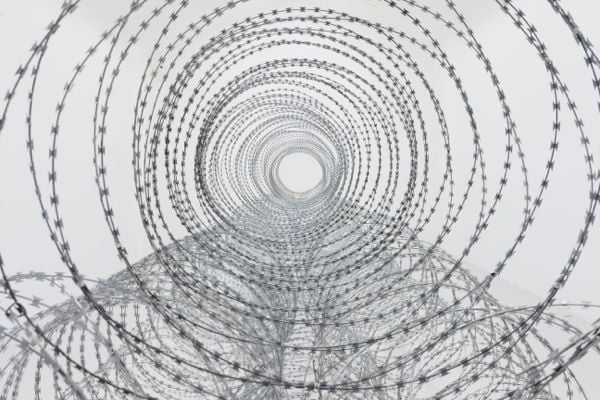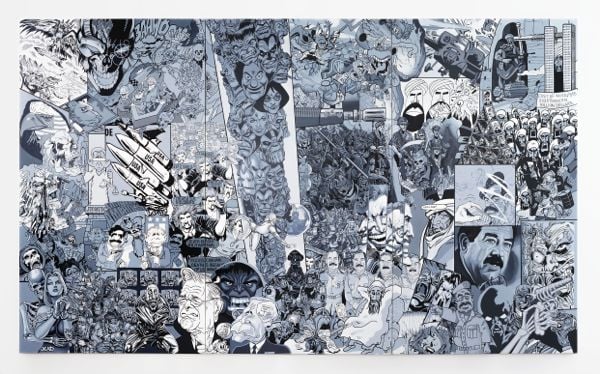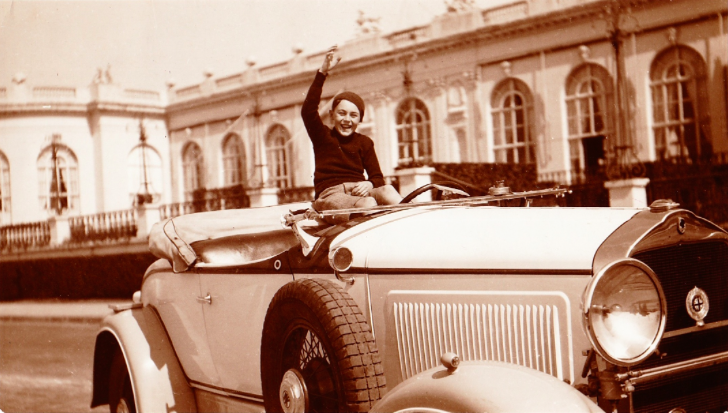As an act of cultural affirmation in the wake of the attacks in Paris on November 13, more than 30 Parisian gallerists who were part of the prematurely shuttered Paris Photo are now preparing to re-stage the exhibitions from their fair booths in their galleries. And while some Parisians are reconsidering what they will show at the upcoming fairs in Miami, all the gallerists artnet interviewed over the last week are proceeding with their plans for the fairs.
“We called the galleries on Monday and Tuesday [Nov. 16, 17] and all the ones who could just said “Yes!” immediately,” said Catherine Ollier, who is artistic director of the gallery Les Filles du Calvaire, which was taking part in Paris Photo this year. When exhibitors at the fair were forced to dismantle their booths because of security measures that resulted in closures of all cultural institutions, Ollier and fellow gallerist and fair exhibitor Françoise Paviot hatched a plan to encourage other galleries to re-mount their exhibitions throughout Paris as soon as feasible.
Gallerist Alain Gutharc had the same idea. Even as Gutharc was exiting Paris Photo, he announced to fair directors that he would re-install in his gallery the artwork he had brought to the fair—namely a solo show of rare vintage prints by French photographer Jacques Henri Lartigue in dialogue with photos by Hervé Guibert. Gutharc has opted to keep those works on view “like a real exhibition” until January 16.
“It was evident to me that we had to have some sort of continuation, even a symbolic one,” said Gutharc who learned of the attacks upon receiving a call during dinner from an anguished friend who’d witnessed the murders at Le Petit Cambodge. He said that he and his fellow exhibitors understood the need to close Paris Photo but were also frustrated because doing so gave the terrorists “the impression of giving up.” “No matter what it takes,” said Gutharc, “cultural life and activities must not cease.”
By last count (on November 21), 34 of the 43 Parisian galleries participating in Paris Photo have agreed to open their doors on Saturday November 28 and Sunday November 29 (on Sundays, Parisian galleries are typically closed). Ollier also said Galerie Vu, located in the ninth arrondisement on the rive droite where much of the violence has taken place, is organizing a cocktail reception on Sunday for the dealers and artists.
The Paris Photo team, Ollier said, has helped market next weekend’s events and has also encouraged galleries to host some of the art publishers who were participating in the fair. Galerie Particulière will welcome Éditions Filigranes, Galerie Polka will host Éditions Xavier Barral and Filles du Calvaire will welcome André Frères Éditions. “It’s really a community and solidarity event with a great spirit,” said Ollier.

Installation view of Gianni Motti’s “Draft.”
Image: Courtesy of Galerie Perrotin
Ollier, who prefers not to emphasize her personal experience when so many others endured situations that were worse, was helping host her gallery’s annual party during Paris Photo when the attacks occurred. According to Ollier, the police called the buildings in the area to warn people and ask them to stay inside.
“Everyone had his mobile phone,” she said, “some did get terrible news, others were relieved…. It was a strange moment of humanity and solidarity.” At 2:30 am, people organized themselves to depart in groups, though the gallery staff stayed until 5 am. The next day, everyone emailed each other and sent text messages. “It seems that most think, strangely enough,” said Ollier, “that inside the gallery surrounded by art was the right place to be to share this terrible moment during those dramatic events.”
Thaddaeus Ropac of Galerie Ropac said some of his employees came to work the day after the violence began, though the gallery’s two Paris outposts remained closed to the public until November 17, as most public and cultural institutions were. Visitors are slowly returning to galleries.
“Thankfully, our staff, family, and friends were not directly hurt by the attacks,” Ropac said. “We are however, all, very much affected by what happened and the news that continues to unfold.”
On November 21, Ropac’s headquarters in Salzburg opened two long-planned exhibitions: the first of artwork created in direct response to the ongoing refugee crisis and the second a charity exhibition whose proceeds will support an aid foundation originally created to help Bosnian refugees.
“In times likes these, we have to engage our responsibility as citizens and as protagonists in the cultural arena,” said Ropac. “Many have underlined the importance of art and culture and I am, of course, a fervent believer of their essential role in our society.”

Erro, Good Bless Bagdad (2004).
Image: Claire Dorn courtesy of Galerie Perrotin. © Erró / ADAGP, Paris, 2015
“We need to think deeply of what freedom means and how we should preserve it,” said Bruno Hadjadj, founder of Paris-based fair Cutlog. His wife lost a colleague in the attacks and the couple have participated in candlelight vigils in the days since.
Art dealer Emmanuel Perrotin expressed concern that his Paris gallery’s solo show of Swiss artist Gianni Motti, “Draft,” which opened October 22 and is scheduled to run through December 19, “may be interpreted differently after this drama” because “the subject is totally connected.” For this show, Motti, who is known for examining both real and perceived issues of personal and state security, has installed big, looping Slinkys of razor wire, the kind used at unwelcoming borders.
And Perrotin said he is re-considering at least one element of his Art Basel Miami booth in the wake of the attacks; he worries that a painting by the Icelandic artist Érro could create some confusion as it may appear to be a response to the violence of the last few weeks. The work was painted “against the war in Iraq,” said Perrotin, and dates from 2004, but makes bold use of caricatures from around the world. “This is not for a fan of Fox News,” he said. “We will decide at the last minute if we will keep it in the booth.”
The Paris-based curators of Miami’s Untitled art fair, Christophe Boutin and Melanie Scarciglia, do not intend to make any kind of tribute or gesture in response to the events in Europe. “I don’t want to impose this on people,” said Boutin, who believes it is best to let individuals deal with the tragedies and the fear on their own. He added, however, that they may address what is happening and the role of culture within that as part of the programming for Untitled Radio, which will be streaming online live from within the fair. “But how and why did we arrive in this situation is my primary concern, and we need time for reflection on this.”








